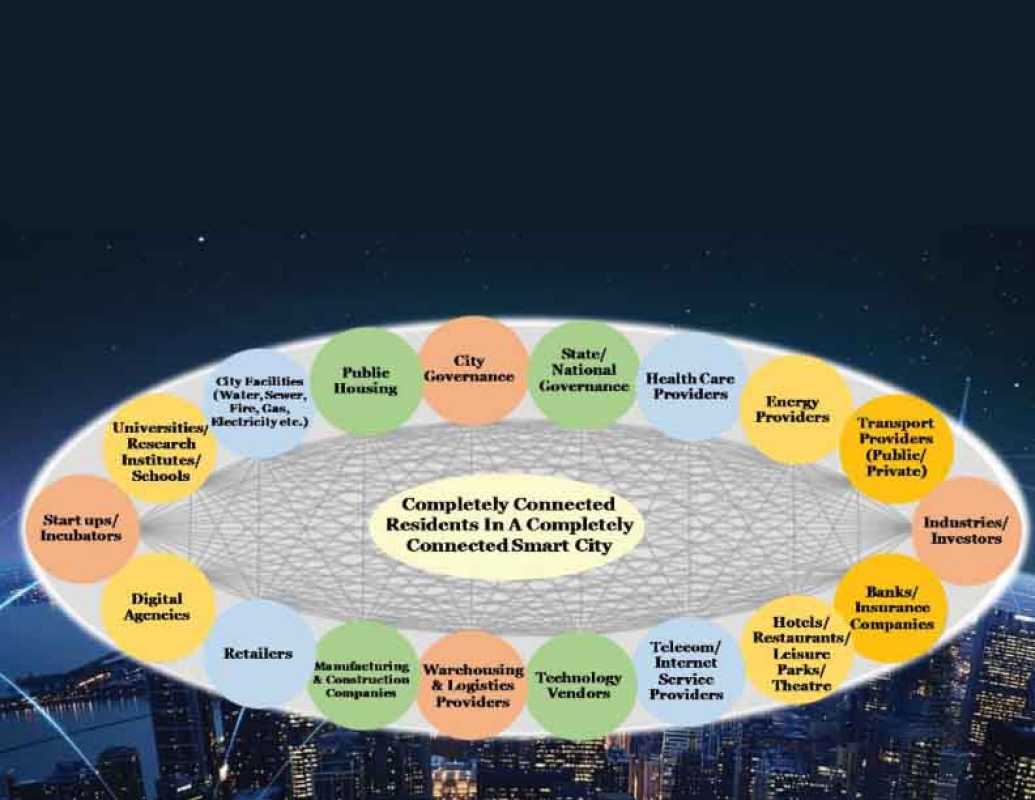Features
The Evolution Of Smart Cities

In recent years, the concept of smart cities has gained significant attention worldwide. A smart city is typically defined as an urban area that uses technology and data to enhance the quality of life for its residents, improve sustainability, and effectively manage its resources. As urbanization continues to rise and challenges such as traffic congestion, pollution, and resource scarcity become more pronounced, the development of smart cities becomes ever more necessary. This article explores the evolution of smart cities, from their early beginnings to the cutting-edge advancements shaping the cities of the future.
The Early Days: Information and Communication Technologies
The idea of using information and communication technologies (ICT) to improve city operations and services can be traced back to the 1990s. During this period, cities began to experiment with technology integration to optimize efficiency in sectors like transportation, energy, and waste management. Examples of early smart city initiatives include the implementation of computerized traffic signal systems to alleviate congestion and the introduction of electronic payment systems for public transportation.
As technology continued to advance, the focus shifted towards building more connected and sustainable cities.
Building the Digital Infrastructure: Internet of Things (IoT)
In the 2000s, the advent of the Internet of Things (IoT) revolutionized the concept of smart cities. IoT refers to a network of interconnected devices embedded with sensors and software, enabling the collection and exchange of data. This connectivity allowed for a more holistic approach to urban management.
With IoT, cities gained the ability to monitor real-time data on various aspects such as air quality, energy usage, and waste management. This wealth of information empowered city authorities to make data-driven decisions, optimize resource allocation, and provide improved services to residents. Furthermore, citizens themselves could actively contribute by sharing data from their smartphones or wearable devices, creating a more participatory and collaborative environment.
Integrating Artificial Intelligence (AI) and Big Data
As smart cities evolved, the integration of artificial intelligence (AI) and big data analytics became increasingly prevalent. These technologies allowed for more sophisticated analysis of enormous amounts of data, enabling predictive modeling and intelligent decision-making.
AI algorithms could be employed to optimize traffic systems dynamically, based on real-time data, leading to reduced congestion and improved commuting times. AI-powered energy management systems allowed for better control over energy demand and supply, optimizing usage and lowering costs. Additionally, AI-assisted public safety systems could analyze data from surveillance cameras, social media, and other sources to detect and respond to potential security threats.
Moreover, big data analytics facilitated a deeper understanding of cities and their residents, leading to more targeted and personalized services. For example, urban planners could use data analysis to identify areas with high energy consumption or inefficient waste management, guiding targeted interventions for improvement.
Towards a Sustainable Future: Renewable Energy and Green Infrastructure
As the focus shifts towards sustainability, smart cities are increasingly incorporating renewable energy sources and green infrastructure. Integration of solar panels on buildings, smart grids to manage energy distribution, and advanced waste management systems are just a few examples of how technology is transforming cities into eco-friendly, self-sustaining ecosystems.
Furthermore, urban design and planning take sustainability into account, with features such as bike lanes, green spaces, and efficient public transportation systems. Smart buildings equipped with energy-efficient systems and automated controls help reduce energy consumption and ensure optimal use of resources.
Looking Ahead: The Rise of 5G and Autonomous Vehicles
The future of smart cities holds even more promise, with the emergence of 5G technology and autonomous vehicles. 5G networks will pave the way for faster and more reliable wireless connectivity, enabling the seamless integration of various smart city devices and services.
Autonomous vehicles offer the potential to revolutionize transportation within smart cities. With their ability to communicate with each other and the surrounding infrastructure, they can optimize traffic flow, reduce accidents, and minimize pollution. The introduction of autonomous public transportation systems could significantly improve mobility and accessibility, especially for elderly and disabled individuals.
Conclusion
The evolution of smart cities is an ongoing process driven by advancements in technology and the growing need for sustainable urbanization. From the initial application of information and communication technologies to the integration of IoT, AI, and big data, smart cities are becoming more efficient, livable, and environmentally friendly. As we continue to embrace new technologies, such as 5G and autonomous vehicles, the cities of the future hold the promise of improved quality of life for all residents while ensuring a sustainable and prosperous future.










